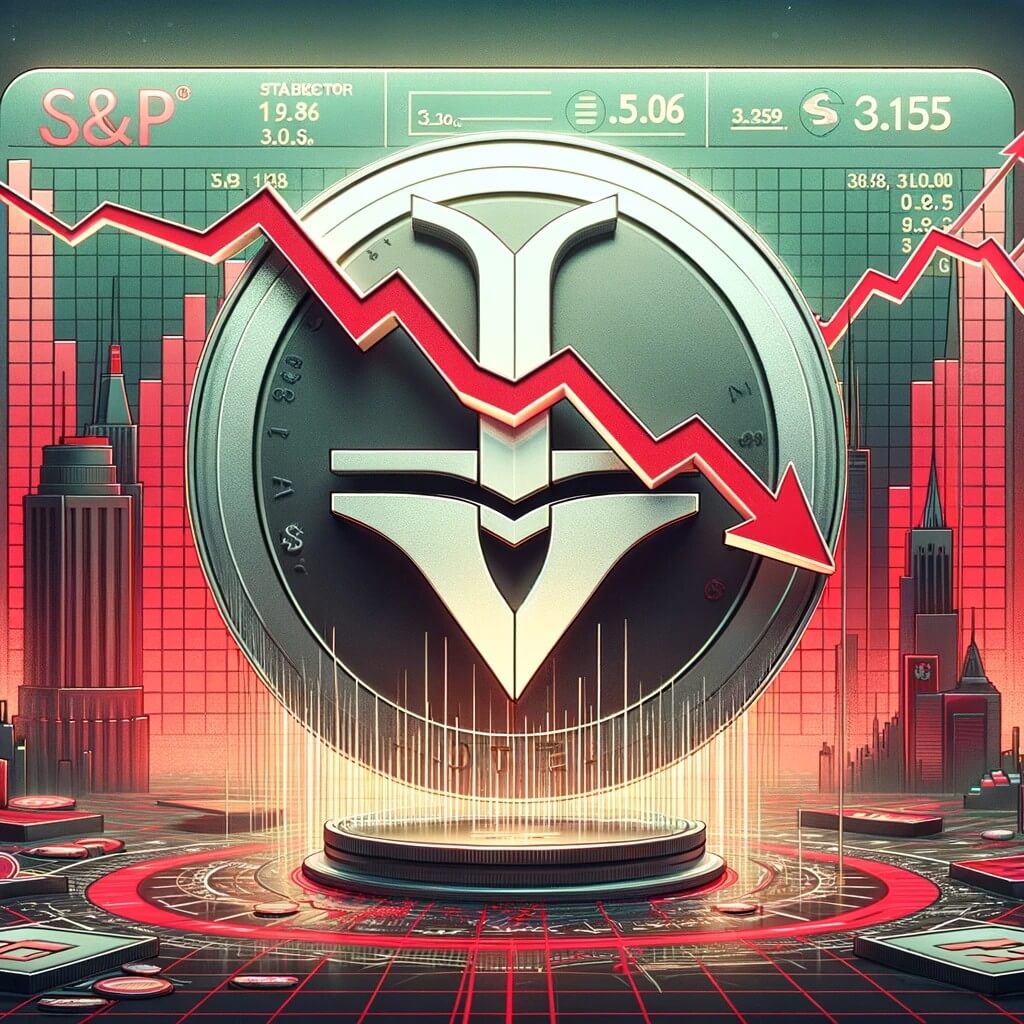S&P Global, a renowned credit rating firm, has ventured into the volatile terrain of cryptocurrencies by launching a risk assessment scale for the world’s top stablecoins. Notably, Tether, a name synonymous with the stablecoin market, received a near-bottom ranking, a surprising twist given its widespread use and prominence in the digital currency sphere.
Assessing the Stability in Stablecoins
Stablecoins, digital currencies pegged to assets or fiat currencies, have risen in popularity, offering a bridge between the traditional financial world and the often turbulent crypto markets. S&P’s novel risk assessment system, ranging from 1 (most stable) to 5 (least stable), diverges from their typical triple-A to default scale used for evaluating governments and companies. This system aims to dissect the qualities and shortcomings of these digital assets.
Tether (USDT), the most widely-used stablecoin, and Dai, ranking fourth in usage, found themselves in the “constrained” category with a score of 4. This rating raises eyebrows and questions about their stability and reliability. TrueUSD, another key player, landed a “weak” 5, indicating significant concerns about its foundation. These scores throw a spotlight on the inherent risks and challenges within the stablecoin ecosystem, particularly following last year’s collapse of TerraUSD and its sister coin Luna, which sent shockwaves through the crypto market.
The Underlying Factors Influencing Scores
The S&P’s approach to rating these digital currencies focuses heavily on the assets backing them. According to S&P analyst Lapo Guadagnuolo, the nature and management of these backing assets are crucial in determining the stability and viability of a stablecoin. The growing use of stablecoins as a payment method necessitates a deeper scrutiny of their underlying structure.
Other stablecoins such as Frax and First Digital USD also received less favorable scores, indicating potential vulnerabilities in their frameworks. In contrast, USD Coin, Gemini Dollar, and Pax Dollar received a “strong” 2 score, reflecting their robustness in key areas such as asset backing and operational soundness.
The ratings also consider factors like regulatory compliance, governance, transparency, liquidity, and redeemability. These elements are critical in understanding the overall health and sustainability of a stablecoin. Weaknesses in these areas can significantly impact a stablecoin’s score, leading to lower ratings and potential investor skepticism.
Guadagnuolo’s poignant remark that “Stablecoin is just a name” underscores the volatile nature of these assets. The Terra-luna debacle, where a so-called stablecoin proved to be anything but, exemplifies the need for a rigorous and nuanced evaluation system like the one S&P has introduced.
In this dynamic landscape, S&P’s scoring system for stablecoins is a pioneering effort to bring clarity and insight into an often opaque and complex market. It signals a shift in the perception and treatment of digital currencies, as they become increasingly intertwined with mainstream financial systems. The lower scores for Tether and other stablecoins serve as a wake-up call for the crypto industry, highlighting the need for greater stability, transparency, and regulation to gain and retain investor confidence.
As the crypto world continues to evolve and mature, assessments like S&P’s will play a crucial role in shaping its future. They provide a much-needed framework for evaluating the risks and potentials of digital currencies, allowing investors and regulators to navigate this new frontier with more information and caution.





